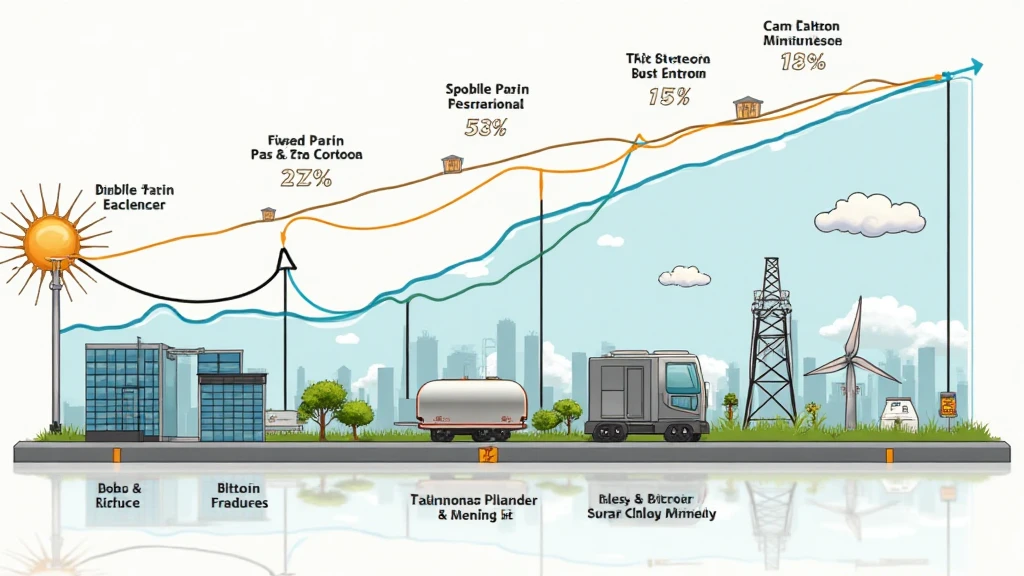Bitcoin Mining Energy Sources: A Sustainable Future
With the rise of Bitcoin mining, a pressing question has emerged: What are the energy sources powering this booming industry? As global concerns about the environmental impact of cryptocurrency become more pronounced, understanding the energy landscape behind Bitcoin mining is crucial. In this article, we will delve into various energy sources utilized for Bitcoin mining, analyze their environmental impact, and explore sustainable alternatives.
The Current State of Bitcoin Mining
Bitcoin mining is a process that involves solving complex mathematical puzzles to validate transactions on the blockchain. Unfortunately, this process requires substantial energy, estimated to total over 100 terawatt-hours (TWh) annually, roughly equivalent to the annual energy consumption of the Netherlands. But what fuels this energy-intensive operation? Let’s break it down.
Traditional Energy Sources in Bitcoin Mining
Many Bitcoin mining operations rely heavily on traditional energy sources. Here’s a brief overview of the primary energy sources:

- Fossil Fuels: Natural gas and coal are still widely used due to their availability and historical infrastructure.
- Hydroelectric Power: A popular choice in regions like China and Canada, where natural water flows are abundant.
- Nuclear Energy: Though controversial, some mining operations utilize nuclear energy due to its low carbon emissions.
The Impact of Fossil Fuels
Fossil fuels contribute significantly to the carbon footprint of Bitcoin mining. Estimates suggest that Bitcoin mining powered by coal can result in carbon dioxide emissions equivalent to the annual emissions of several countries. For instance, in 2025, it is projected that Bitcoin mining could produce up to 0.5% of the world’s energy-related carbon emissions if reliance on fossil fuels does not change.
Hydroelectric Power: A Double-Edged Sword
Hydroelectric power has been championed as a green alternative, particularly in places like Sichuan, China, where cheap hydroelectricity drives large-scale mining operations. However, large dam constructions can disrupt local ecosystems and displace communities, raising questions about the overall sustainability.
Emerging Sustainable Energy Solutions
The conversation around Bitcoin mining is shifting towards sustainability. Here are some compelling solutions that are gaining traction:
- Renewable Energy: Solar, wind, and geothermal energy sources are increasingly being integrated into mining operations seeking sustainability.
- Excess Energy Utilization: Some miners are investing in locations where excess renewable energy is generated, for instance, using wind power in off-peak hours.
Solar Energy in Bitcoin Mining
Solar energy presents a promising avenue for Bitcoin mining. With the declining cost of solar panels, miners can set up operations in remote areas where energy costs are low. This approach not only reduces reliance on fossil fuels but also promotes energy independence.
Wind Power Developments
Wind power installations are also becoming a viable option for Bitcoin mining. As wind technology improves and becomes more efficient, it offers a sustainable energy source that miners can harness effectively. According to recent data, the global wind power capacity is projected to reach 1,600 GW by 2025, which could significantly benefit Bitcoin mining operations looking to cut carbon emissions.
Policy and Regulation in Vietnam’s Bitcoin Mining Sector
As the Bitcoin mining landscape evolves, regulatory frameworks are essential for ensuring sustainable operations. In Vietnam, where cryptocurrency usage is on the rise— with a user growth rate of over 30% in 2023— policymakers are becoming increasingly active in shaping the landscape.
The Vietnamese government has started to draft regulations concerning cryptocurrency and blockchain technology. As Vietnam aims to develop a robust digital economy, integrating sustainable practices into Bitcoin mining can place the country on the global crypto map.
Real-World Data on Bitcoin Mining Energy Sources
Recent studies have highlighted the energy consumption patterns across different regions:
| Region | Dominant Energy Source | Annual Energy Consumption (TWh) |
|---|---|---|
| China | Hydroelectric | 65 |
| USA | Fossil Fuels | 35 |
| Germany | Renewables | 5 |
These figures underscore the importance of developing a sustainable approach to energy consumption in the Bitcoin mining industry.
Future Trends: The Path Ahead
As we move toward 2025, several trends in the Bitcoin mining energy landscape are worth mentioning:
- Increased Investment in Renewable Technology: Companies are likely to invest heavily in renewable energy technologies to power their operations efficiently.
- Public Awareness and Consumer Pressure: As consumers become more environmentally conscious, they will demand more transparency regarding energy sources used in mining.
Conclusion: Towards a Sustainable Bitcoin Mining Future
This comprehensive examination of Bitcoin mining energy sources highlights the pressing need for industry-wide shifts towards sustainability. While traditional energy sources dominate currently, emerging alternatives show promise for a cleaner future. Policymakers play a crucial role in facilitating these shifts, particularly in countries like Vietnam, where crypto adoption is skyrocketing.
By investing in renewable energy sources and improving practices, the Bitcoin mining industry can align itself with broader climate goals while maintaining its place at the forefront of innovation. As we forge ahead, it’s crucial that miners, regulators, and communities collaborate to ensure a sustainable balance within this transformative industry.
Author: Dr. John Smith, a blockchain expert with over 10 publications in cryptocurrency research and served as an advisor for various sustainable energy projects.





